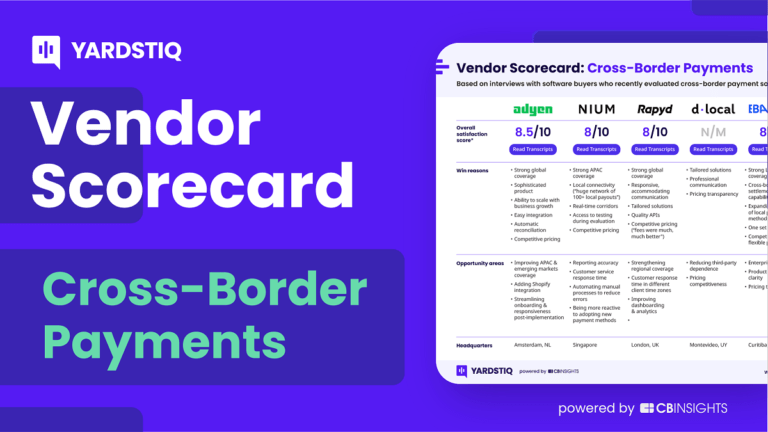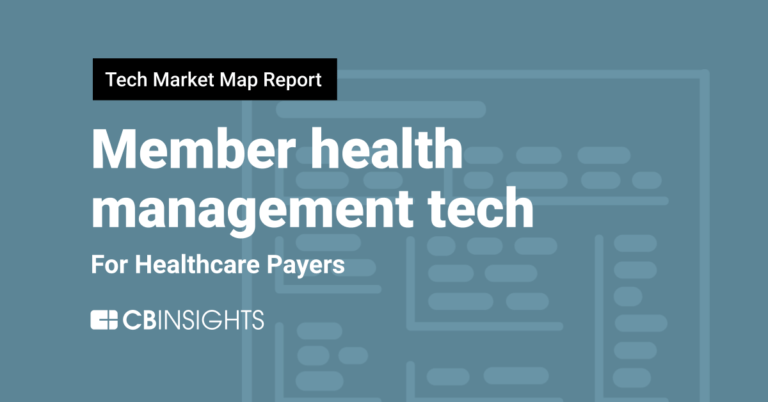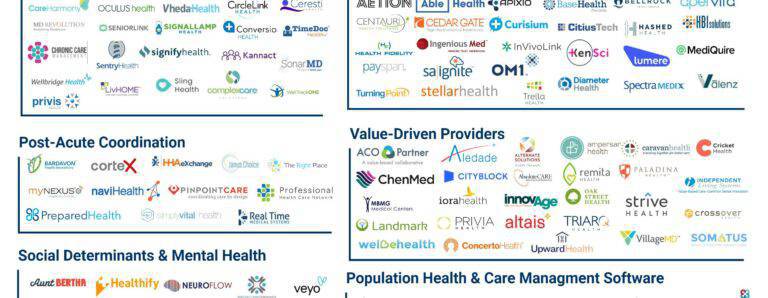
Cadence
Founded Year
2020Stage
Series B | AliveTotal Raised
$141MValuation
$0000Last Raised
$100M | 3 yrs agoMosaic Score The Mosaic Score is an algorithm that measures the overall financial health and market potential of private companies.
-31 points in the past 30 days
About Cadence
Cadence is a health technology company that focuses on remote patient monitoring and chronic disease management within the healthcare sector. The company offers a comprehensive solution that includes state-of-the-art remote monitoring technology, a multidisciplinary clinical care team, and evidence-based protocols to improve patient adherence to treatments and reduce healthcare costs. Cadence primarily serves health systems and providers looking to enhance patient care and achieve better health outcomes. It was founded in 2020 and is based in New York, New York.
Loading...
Cadence's Products & Differentiators
Remote monitoring
Cadence’s technology facilitates more proactive patient care and follow-ups. It utilizes a patient’s relevant vitals and healthcare data, allowing patients’ care teams to deliver effective management of medications, therapies, and lifestyle.Cadence has developed robust evidence-based clinical protocols based on national society guidelines that allow Cadence clinical staff to provide care to patients and reduce the work required of HCA clinicians, while achieving industry-leading clinical outcomes. These protocols are reviewed and signed off on by physician leadership. In addition, because of these protocols, the Cadence care team has been able to resolve 99% of patient interactions without the need for escalation to the partner clinician. Cadence has 3 tiers of alerts which results in differing levels of intervention including
Loading...
Research containing Cadence
Get data-driven expert analysis from the CB Insights Intelligence Unit.
CB Insights Intelligence Analysts have mentioned Cadence in 4 CB Insights research briefs, most recently on Jan 30, 2023.

Expert Collections containing Cadence
Expert Collections are analyst-curated lists that highlight the companies you need to know in the most important technology spaces.
Cadence is included in 4 Expert Collections, including Unicorns- Billion Dollar Startups.
Unicorns- Billion Dollar Startups
1,270 items
Value-Based Care & Population Health
1,069 items
The VBC & Population Health collection includes companies that enable and deliver care models that address the health needs for defining populations along the continuum of care, including in the community setting, through participation, engagement, and targeted interventions.
Digital Health
11,306 items
The digital health collection includes vendors developing software, platforms, sensor & robotic hardware, health data infrastructure, and tech-enabled services in healthcare. The list excludes pureplay pharma/biopharma, sequencing instruments, gene editing, and assistive tech.
Telehealth
3,114 items
Companies developing, offering, or using electronic and telecommunication technologies to facilitate the delivery of health & wellness services from a distance. *Columns updated as regularly as possible; priority given to companies with the most and/or most recent funding.
Latest Cadence News
Mar 28, 2025
Dr. Eve Cunningham, chief medical officer at telehealth and remote patient monitoring firm Cadence and former virtual care and digital health chief at Providence, sees a way to create a more sustainable and patient-centered healthcare system. 01:33 PM Dr. Eve Cunningham is chief medical officer at Cadence, and previously served as group vice president, chief of virtual care and digital health, at the Providence health system Photo: Dr. Eve Cunningham Cadence, an AI-powered and clinician-led remote patient care technology and services company, recently appointed Dr. Eve Cunningham as its chief medical officer. She has spent the last 20 years deploying transformational health IT programs at provider organizations, leading large, multidisciplinary medical groups and integrating AI into clinical care at some of the largest non-profit health systems in the country. Health systems of all shapes and sizes face challenges with access to primary care, scaling chronic disease management programs, reducing readmissions and length of stay, and achieving quality goals for Medicare patients. Cadence's goal is to help health systems overcome these challenges. We spoke with Cunningham recently about her new role, and got her thoughts on reimagining how clinicians practice care, the most pressing issue in healthcare today and how virtual care can help, AI's role in clinical care evolution – and the changes needed to create a more sustainable and patient-centered healthcare system. Q. You recently transitioned from a leadership role at a major health system to the startup life with Cadence. You've been in leadership roles in several large nonprofit providers. What made you make a move from a traditional health system to a remote care delivery system in the digital health space? A. I have spent the past 22 years of my career working in some of the largest nonprofit health systems in the country, serving in a variety of clinical, operational and innovation-focused leadership roles. Throughout that time, I had a front-row seat to both the incredible strengths and the significant challenges that health systems face – particularly as they work to meet increasing patient demand, address clinician burnout and integrate new models of care. While health systems continue to do incredible work, it has become increasingly clear that the future of care delivery will require strong partnerships between provider organizations and a portfolio of innovative health tech companies. The key to meaningful transformation isn't just about adopting new technologies – it's about thoughtfully integrating systems that enhance patient care, reduce the burden on clinicians, and improve operational efficiency in a way that is sustainable for health systems. This is such an exciting time for the industry. We are seeing widespread adoption of digital health systems, remote care models and team-based approaches that have the potential to make healthcare more proactive and accessible. The industry is reaching an inflection point where we are moving beyond pilot programs and early-stage adoption to true integration at scale. That's what makes this moment so compelling – there is an opportunity to help bridge the gap between innovative care models and real-world implementation at the health system level. That kind of transformation is something I have always been passionate about, and it was clear to me that my next step should involve working at the intersection of health systems and technology. When I started thinking about what kind of role I wanted to pursue, I knew I wanted to be on the industry side of healthcare technology and services, bringing my experience, relationships and deep understanding of health system operations to a company that is making an impact in care delivery. The opportunity to take on this role aligned naturally with my experience and goals. I had already been working closely with the team in a strategic advisory capacity for more than two years, so I had firsthand knowledge of the people, the mission and the vision for the future. As I look ahead to the coming years, I see incredible potential for growth and impact. I feel incredibly fortunate to be part of such a talented team, and I'm deeply grateful to my colleagues who have helped make this transition seamless, including those who will continue to play pivotal roles in the clinical leadership of the organization. Q. You say that in your new job you want to reimagine how clinicians practice care. What does that transformation look like? A. Reimagining how clinicians practice care requires breaking away from the deeply ingrained structures of traditional healthcare delivery and embracing new models that expand access, improve outcomes, and better support both patients and clinicians. Historically, care delivery has been built around episodic interactions – patients coming into a clinic or hospital for scheduled visits, with long gaps in between. While this model has worked for decades, it is increasingly misaligned with the realities of today's healthcare landscape. The growing burden of chronic disease, the clinician workforce shortage and rising operational costs all demand a new approach that makes care more continuous, proactive and scalable. At its core, care transformation is about moving beyond incremental improvements and instead fundamentally restructuring how care is delivered. This means integrating collaborative and team-based care models, leveraging digital infrastructure to extend care beyond the four walls of a hospital or clinic, and finding ways to engage patients more effectively in managing their health. When new models of care are tested and proven to improve outcomes, they represent innovation. But true transformation happens when these innovations scale – when they become the new standard of care across health systems, benefiting millions rather than thousands of patients. This shift is incredibly challenging. Physicians are trained in a specific way, and health systems have been built to support traditional care models. Most hospitals and clinics simply do not have the infrastructure in place to orchestrate a virtual or hybrid workforce at scale. The clinician shortage only compounds this challenge. Today, we are already facing a severe shortage of healthcare providers, and the problem will only worsen as the population ages. Meanwhile, chronic disease management remains alarmingly inadequate – only about half of patients with hypertension are adequately dosed, more than half of diabetics are not in good control, and only a small percentage of heart failure patients are properly dosed on guideline-directed therapy. With 10,000 people aging into Medicare every day, the gap between patient needs and available care will continue to widen unless we fundamentally rethink how we deliver care. A 20-minute office visit every few months is simply not an effective way to manage complex, ongoing health conditions. Yet, many traditional health systems struggle to restructure their workforce due to financial constraints, operational complexities and widespread clinician burnout. This is why it is so critical to explore new models that allow clinicians to work at the top of their license, while also expanding the care team to include other professionals who can help manage patients more effectively. To truly scale ourselves as clinicians, we must rethink who does what in healthcare, leverage technology to streamline and support care, and build the right organizational structures to make these changes sustainable. Ultimately, we have to move toward a healthcare system where access is not dictated by clinic availability but by patient need. Many healthcare visits today are unnecessary or could be handled differently if care models were better aligned with modern capabilities. While reimbursement structures still play a role in shaping care delivery, we are at a moment where forward-thinking organizations are proving that it is possible to redesign care in a way that benefits both patients and providers. The challenge now is ensuring that these innovations are not just small-scale experiments but become the blueprint for the future of care. Q. What is the most pressing issue in healthcare right now? And what role can virtual care and remote patient monitoring play in helping tackle the challenge? A. The most pressing issue in healthcare today is that our current infrastructure is unsustainable. The United States spends more per capita on healthcare than any other developed nation, yet our outcomes lag behind. Too much of our system is focused on "sick care" rather than proactive, preventative health measures that could reduce the burden of chronic disease. Health systems, particularly those in rural and underserved areas, are under immense financial strain, grappling with rising costs, clinician shortages and an aging population that is increasing the demand for medical services . With 10,000 people aging into Medicare every day, the gap between patient needs and available resources is growing at an alarming rate. If we continue down this path without rethinking how care is delivered, we will see even more hospitals closing, particularly in rural communities, and even greater challenges in access to quality care. A major driver of this crisis is the way we currently manage chronic disease. Conditions like heart failure, hypertension and diabetes are among the most common and costly to treat, yet they remain poorly controlled for a significant portion of the population. For example, only about half of patients with hypertension are properly dosed, and more than half of diabetics are not meeting their glucose targets. The standard approach – brief, infrequent office visits – is simply not sufficient for managing complex, long-term conditions that require continuous monitoring and adjustments. Patients need more frequent touch points, guidance on medication adherence, and support for behavioral and lifestyle changes that can have a significant impact on their health. Likewise, clinicians need better, more timely data to make precision-driven decisions about treatment. Without these elements, we are constantly playing catch-up, treating complications instead of preventing them. Virtual care and remote patient monitoring have the potential to serve as a lifeline in this crisis. By leveraging technology to extend care beyond the traditional office visit, we can reorchestrate care delivery in a way that meets patients where they are – whether in their homes or communities – rather than relying solely on in-person interactions. Proactively managing chronic disease through continuous monitoring and virtual touchpoints allows health systems to intervene earlier, preventing the poor outcomes that occur when conditions like heart failure or hypertension go unchecked. This shift can reduce hospitalizations and lower costs, and ultimately improve patient quality of life. Virtual care and team-based approaches help distribute care more effectively, ensuring that patients receive the right level of attention while allowing physicians to focus on the most clinically appropriate care for in-person visits. By embracing these models, we have an opportunity to make healthcare more sustainable – not just for the health systems struggling to stay afloat, but for the patients and clinicians who rely on them. Q. AI is often seen as both an opportunity and a challenge in healthcare. How do you see its role in clinical care evolving? A. AI presents one of the most significant opportunities – and challenges – in modern healthcare. Its potential to enhance clinical care, optimize workflows and expand access is undeniable, but its integration must be thoughtful, ethical and clinically validated. As we move forward, AI's role in healthcare will likely evolve in three key areas: augmenting clinical decision making, reducing administrative burdens and enhancing patient engagement. First, AI has the potential to dramatically enhance clinical decision making by synthesizing vast amounts of patient data, identifying trends and offering insights that may not be immediately apparent to clinicians. In specialties like cardiology, oncology and chronic disease management, AI-driven predictive analytics could help identify patients at risk for complications before they experience symptoms, allowing for earlier intervention. However, while AI can support decision making, it must remain just that – a support tool. Clinicians should always be the ultimate decision makers, using AI-generated insights as an aid rather than a substitute for medical judgment. The challenge lies in ensuring that AI models are transparent, explainable and free from bias, which requires rigorous validation and continuous monitoring. Second, AI has the potential to significantly reduce the administrative burden that contributes to clinician burnout. Today, physicians and nurses spend an overwhelming amount of time on documentation, coding and other non-clinical tasks. AI-powered automation, including ambient technology for documentation and workflows, clinical summarization software, and intelligent charting, can help streamline workflows, freeing up clinicians to focus more on direct patient care. The key here is ensuring that AI systems truly enhance efficiency rather than add another layer of complexity to an already strained healthcare system. Thoughtful implementation, guided by clinician input, will be essential to making AI tools that are both effective and user-friendly. Finally, AI can play a crucial role in improving patient engagement and health literacy. Personalized health coaching, chatbots and AI-driven remote monitoring tools can help patients better understand their conditions, adhere to treatment plans and take a more active role in their health. However, there is a fine line between AI as an enabler and AI as a barrier to care. While automation can help scale outreach and engagement, it cannot replace the human element of medicine – especially for patients with complex conditions who require nuanced, empathetic communication. As AI continues to evolve in healthcare, the challenge will be balancing innovation with responsible implementation. AI is not a silver bullet, nor should it be used to replace human clinical expertise. Instead, its greatest potential lies in augmenting care delivery, allowing clinicians to work more efficiently while improving patient outcomes. The path forward requires rigorous oversight, clear ethical guidelines, and a commitment to ensuring that AI-driven healthcare remains patient-centered, equitable and clinically sound. Q. When you think about the future of care, what do you envision? What changes need to happen to create a more sustainable and patient-centered healthcare system? A. A sustainable healthcare system must address three critical areas: access, efficiency and quality. Access remains a significant challenge, particularly in rural and underserved communities where provider shortages are most severe. To close this gap, we need to embrace new models of care delivery that leverage digital health tools, remote monitoring and virtual care to extend the reach of clinicians. By decentralizing care and meeting patients where they are – in their homes and communities – we can reduce unnecessary hospital visits and provide more timely, preventative interventions. This shift will not only improve outcomes but also alleviate the growing strain on overburdened emergency departments and primary care offices. Efficiency is another key area that requires transformation. The way healthcare is delivered today is often fragmented and inefficient, leading to excessive administrative burdens on clinicians and unnecessary costs. By rethinking how care teams are structured and deploying technology to automate non-clinical tasks, we can help clinicians operate at the top of their license and spend more time focusing on patient care. Team-based approaches that incorporate nurses, advanced practice providers, pharmacists and health coaches alongside physicians can create a more sustainable model for managing chronic disease, ensuring that patients receive more frequent touchpoints and tailored guidance without overburdening doctors. Finally, quality must remain at the center of all healthcare transformation efforts. Shifting to more proactive, continuous care models is not just about scaling services – it's about improving outcomes and making a positive clinical impact. Today, we know that many chronic conditions are not well controlled under our current healthcare system. We need to make it easier for patients to stay engaged in their care, whether that means providing more real-time data, leveraging behavioral science to encourage adherence, or redesigning the patient experience to be more intuitive and less fragmented. The most successful models will be those that seamlessly integrate digital tools with human-centered care, ensuring that technology enhances – not replaces – the clinician-patient relationship. To create a more sustainable, patient-centered healthcare system, we must be willing to break away from the status quo. This means embracing new technologies thoughtfully, restructuring care teams strategically, and ensuring that financial incentives align with better patient outcomes rather than simply driving more volume-based care. The path forward requires collaboration between health systems, technology companies and policymakers, all working toward a common goal: a healthcare system that delivers higher-quality care, at a lower cost, while improving both patient and clinician experiences. If we can achieve this, the future of healthcare will be one that is not only more sustainable but also more equitable, more accessible, and, ultimately, more effective in keeping people healthy. Follow Bill's HIT coverage on LinkedIn: Bill Siwicki
Cadence Frequently Asked Questions (FAQ)
When was Cadence founded?
Cadence was founded in 2020.
Where is Cadence's headquarters?
Cadence's headquarters is located at 295 Lafayette Street, New York.
What is Cadence's latest funding round?
Cadence's latest funding round is Series B.
How much did Cadence raise?
Cadence raised a total of $141M.
Who are the investors of Cadence?
Investors of Cadence include Thrive Capital, General Catalyst, Adam Boehler, K5 Global Technology, Free Solo Ventures and 6 more.
Who are Cadence's competitors?
Competitors of Cadence include Spire Health and 6 more.
What products does Cadence offer?
Cadence's products include Remote monitoring and 1 more.
Who are Cadence's customers?
Customers of Cadence include Community Health Systems.
Loading...
Compare Cadence to Competitors

Doccla is a virtual hospital that specializes in the healthcare technology sector. The company offers remote patient monitoring services, utilizing medical IoT devices to monitor patients outside of traditional hospital settings, and integrates with electronic health records to streamline patient data management. Doccla primarily serves the healthcare industry, providing solutions to hospitals, clinics, and other medical institutions. It was founded in 2019 and is based in London, United Kingdom.
Medicilio is a healthcare provider specializing in medical home services and telemedicine. The company offers a range of services including diagnostic exams, specialist visits, general practitioner appointments, and online consultations, all designed to be accessible from the comfort of the patient's home. Medicilio primarily serves the healthcare sector, catering to the needs of the elderly, disabled, and those with mobility issues. It was founded in 2020 and is based in Milan, Italy.
Doctomatic focuses on providing healthcare monitoring through its AI-powered remote patient monitoring software. The company offers a medical software tool that enables the transmission of data from non-invasive medical devices to a medical platform, where healthcare professionals can analyze and evaluate patient information. Doctomatic primarily serves the healthcare industry by empowering clinicians to monitor chronic patients' health data on a daily basis and predict potential deterioration in their conditions. It was founded in 2021 and is based in Barcelona, Spain.

Huma is a healthcare AI company that provides digital health solutions for care and research. The company offers services including remote patient monitoring, hospital-at-home programs, virtual wards, and decentralized clinical trials. Huma's technology is used by hospitals and clinics globally and is integrated into clinical trials. Huma was formerly known as Huma Therapeutics GmbH. It was founded in 2011 and is based in London, United Kingdom.

NeuroFlow operates as a digital health company that focuses on integrating behavioral health with physical health across various care settings. The company offers workflow automation, patient engagement solutions, and applied artificial intelligence (AI) to facilitate remote patient monitoring, improve risk stratification, and support collaborative care. NeuroFlow primarily serves healthcare providers, payors, and the federal government with its health insurance portability and accountability act (HIPAA)-compliant, cloud-based tools designed to enhance population behavioral health and reduce the cost of care. It was founded in 2017 and is based in Philadelphia, Pennsylvania.
Lenus Health specializes in predictive artificial intelligence solutions for chronic conditions within the healthcare technology domain. The company offers digital tools and AI models that support the diagnosis, treatment, and management of diseases such as chronic obstructive pulmonary disease (COPD) and heart failure, aiming to improve patient outcomes and reduce hospital admissions. Its products are designed to integrate with healthcare systems, providing clinicians with actionable insights and facilitating remote patient management. Lenus Health serves the healthcare sector. The company was founded in 2020 and is based in Edinburgh, United Kingdom.
Loading...



